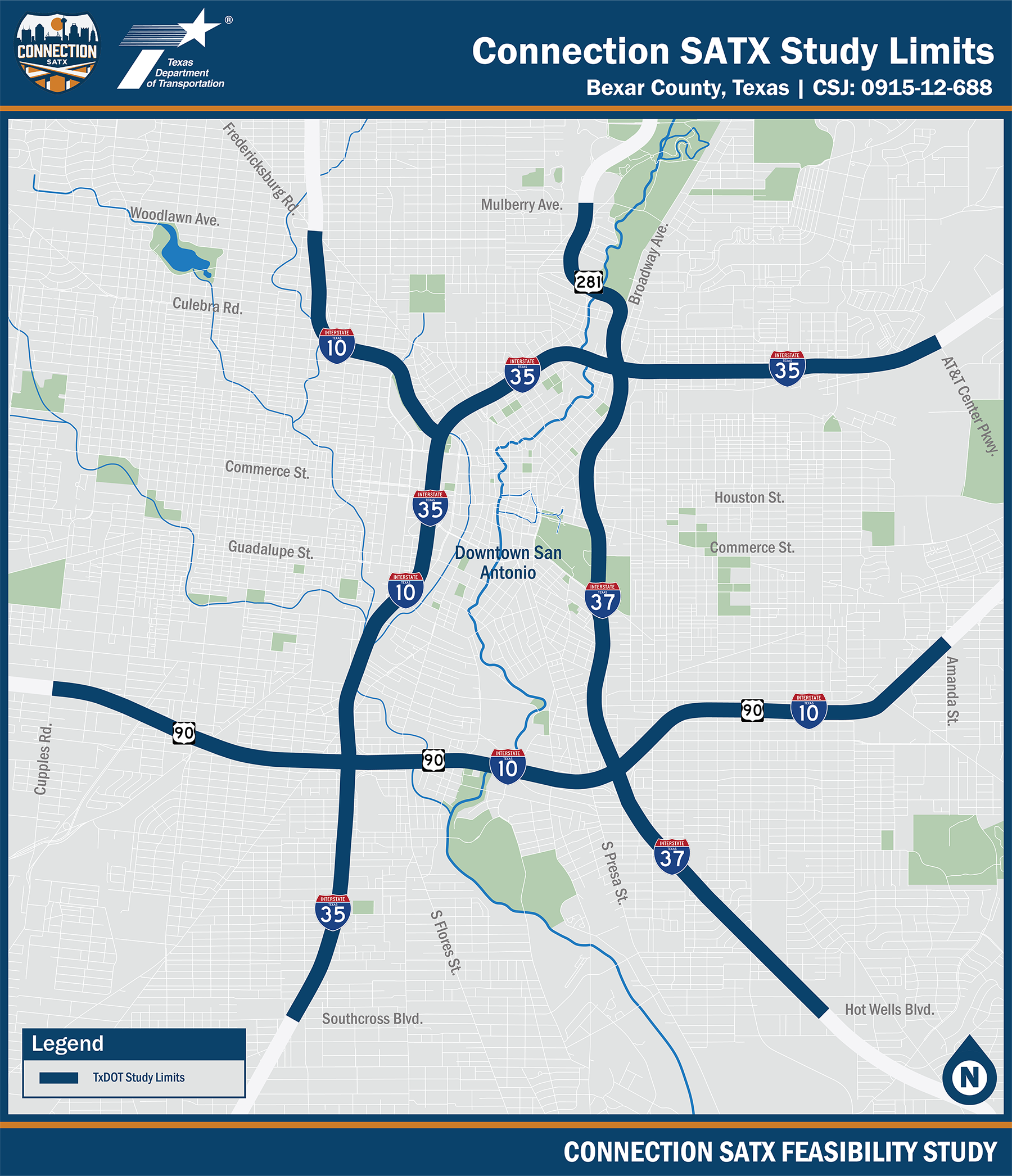Study overview
The Texas Department of Transportation (TxDOT) San Antonio District in coordination with Bexar County, the City of San Antonio and the Alamo Area Metropolitan Planning Organization (AAMPO)is conducting a feasibility study of the roadway network in and around the downtown San Antonio area, including three interstates, I-10, I-35, I-37, and two US highways, US 90 and US 281. These corridors go through urbanized and residential areas within San Antonio and serve as the road network for tens of thousands of people who live and work in the downtown area as well as the freight traffic that delivers goods in San Antonio and beyond. In addition to the large population that lives and works along these corridors, San Antonio serves as one of the largest conference cities in the United States and is a travel destination, which generates additional traffic congestion due to tourism.
Objective & process
The objective of the Downtown Feasibility Study is to:
- Analyze current and future corridor challenges throughout the study area.
- Identify the future vision for enhancing the downtown highway system utlizing the community's input.
- Draft a comprehensive plan addressing the specific needs of each corridor.
The study will be conducted through a process of data collection, analysis of current and future transportation needs, and public involvement.

What is a feasibility study?
- A feasibility study is when a project is in the very early stages of development.
- The study helps determine if the project should move forward to more in-depth environmental analysis, public involvement, schematic design and right-of-way mapping.
- The study team, in coordination with city and county officials, and stakeholders, will develop study goals and objectives, assess environmental and engineering constraints, and identify preliminary route options.
- With input from the public and additional technical analysis, the study team would refine and recommend route options for further study.
- These route options would be the starting point for any future phases of project development, including an environmental study, should the project advance.
Anticipated feasibility study timeline
- 2020 - 2024 - Data collection and existing conditions analysis
- Spring 2024 – Winter 2024/2025 – Initial Stakeholder meetings
- Summer 2025 – Open House #1
- Summer 2025 – Spring 2026 – Initial Concept Development
- Spring 2026 – Open House #2
- 2027 - Final Feasibility Report
Next steps
Breakout projects are advanced based on need and available funding. Durations of each phase is dependent on the characteristics of each individual or grouped projects.
- Develop schematic and environmental clearance
- Right of way acquisition, utility adjustments, and final design
- Construction
Public involvement
The purpose of public involvement is to share study information and updates and collect input from the community. Public input is a highly valued and important part of creating improvements to address transportation needs. TxDOT is committed to working closely with the public to ensure that community members have the opportunity to comment, voice concerns, and ask questions.
Opportunities for public participation include meetings with working groups, regular coordination with elected officials and government staff, stakeholder meetings, community meetings and public meetings.
The first In-Person Open House with a Virtual Option is scheduled for:
Project updates
If you are interested in receiving updates, please send an email with “Connection SATX Updates” in the subject line to ConnectionSATX@jacobs.com. Updates will also be posted on the study website at www.txdot.gov, keyword “Connection SATX”.